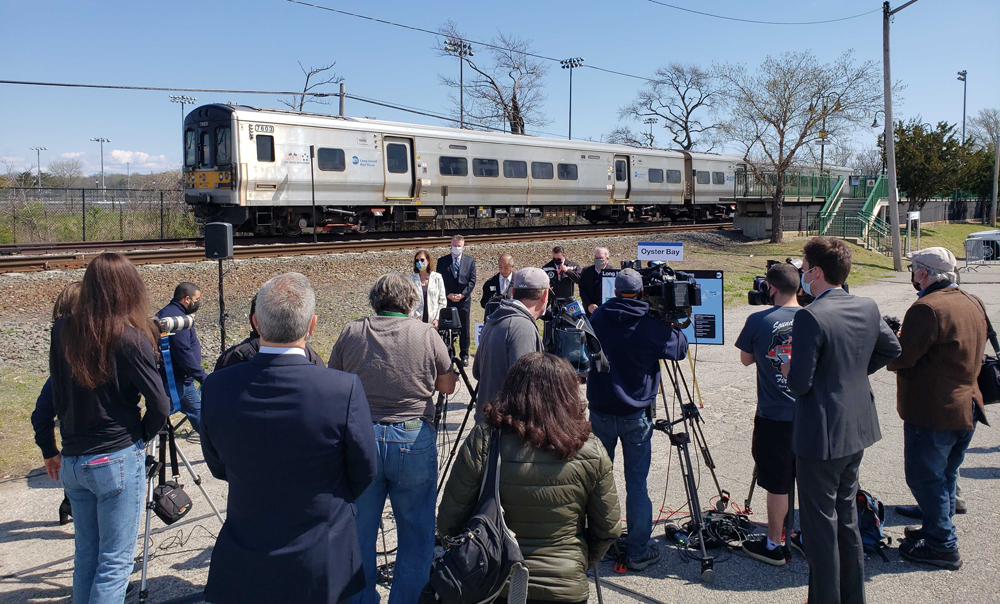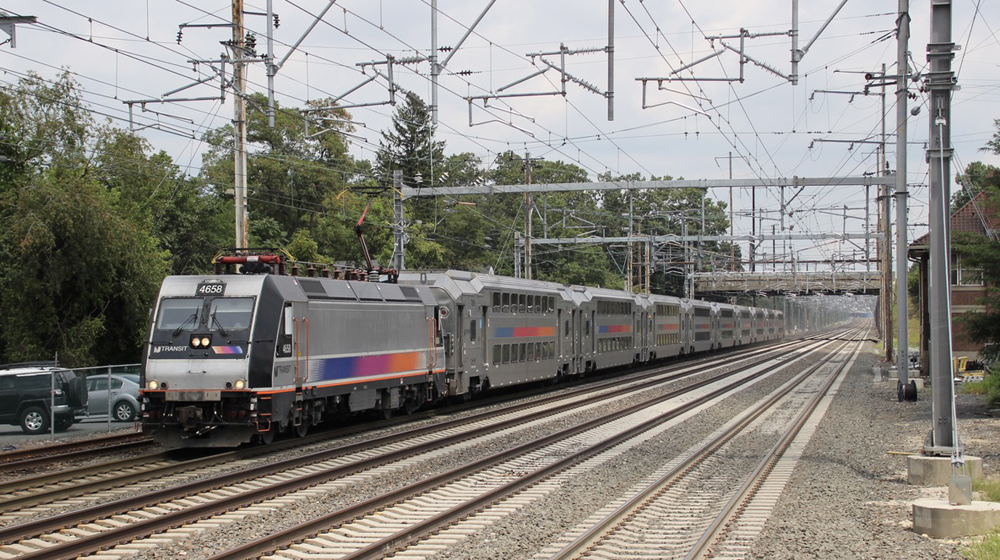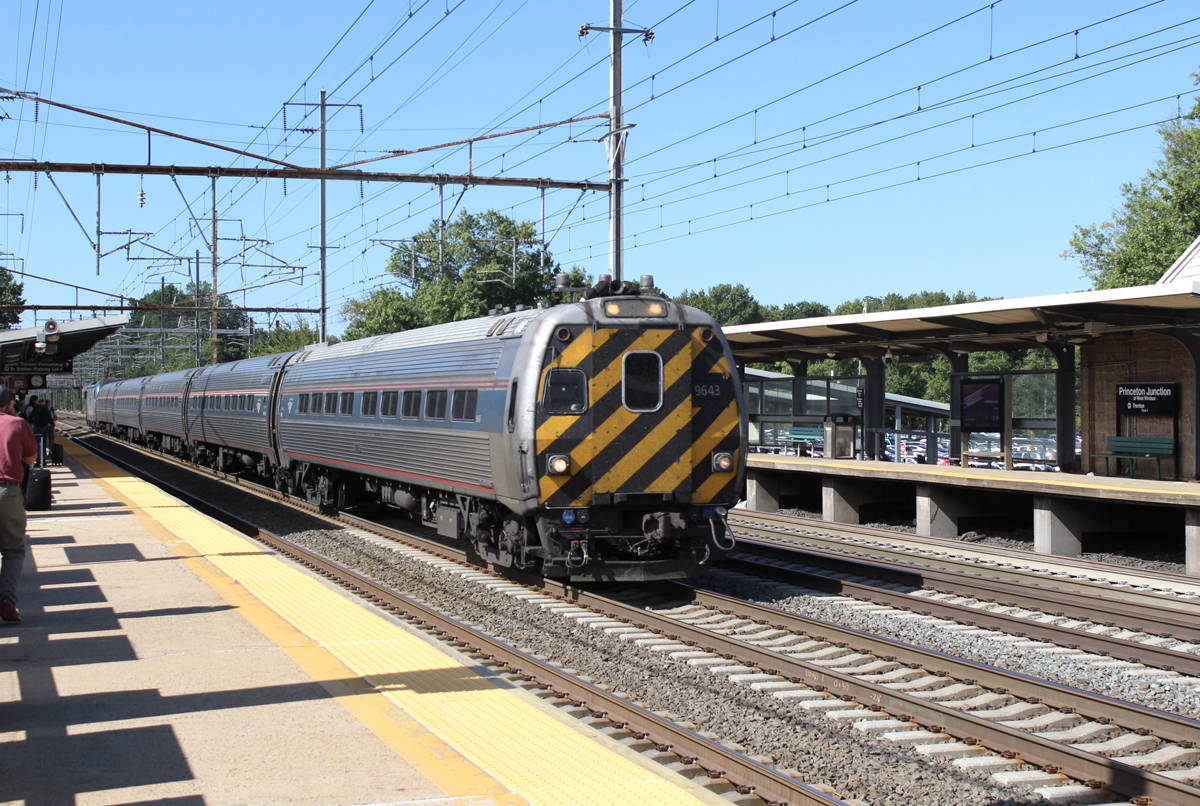
NEW YORK — The Long Island Rail Road has scrapped a plan to develop battery-electric multiple-unit trainsets for use on its non-electrified lines, Newsday reports, after determining retrofitting of existing equipment is not feasible.
The LIRR and Alstom announced a partnership to develop and test the equipment on its Oyster Bay Branch in April 2021 [see “Long Island rail Road announces plan to test battery-electric equipment,” Trains News Wire, April 20, 2021]. Two electric multiple-unit cars were to be retrofitted with batteries, with the train running on third-rail power where available and batteries on the non-electrified portion of the route. The LIRR spent $850,000 on the project.
The decision comes as business and environmental groups are asking that the LIRR eliminate diesel operation by 2050 by requiring systemwide electrification as part of a state plan to become carbon neutral. The LIRR’s parent, the Metropolitan Transportation Authority is assessing electrification as part of a “20-year needs assessment,” but the cost of up to $18 million per mile could be prohibitive. About 160 of the LIRR’s 319 route-miles are not electrified.














What’s this? NO! ? What does “Retrofitting is Not feasible” mean?
Are they saying it’s cheaper to spend $2.8Bn (160miles x 18mn/mile) to lay third rail on mta track than put batteries in cars to drive the existing motors? Where’s the report governing this $850,000 expenditure? I have spent 30 minutes online searching for this “report” pdf….nowhere!
What is this nonsense?
1. The LIRR diesel locos badly need replacement with something more reliable. Plus the fleet is way too small.
2. Electrification would mean that all passengers on all lines could have direct trains to GCT. LIRR might have to finally acknowledge that eastern Long Island is no longer mostly farmland, and have to stop treating riders to the east as 2nd class citizens.
3. While battery power may have worked well to Oyster Bay, what are the odds of a battery powered train making it all the way to Port Jeff?
4. On things MTA doesn’t want to do, it’s cost estimates seem to be far higher than anyone else’s.
“M.T.A.” = (M)ay we (T)ry to (A)void serving you?
$18 M sounds high. We had data for supplying overhead 600V suggesting more like $1 M (single track). Surely 3rd rail shouldn’t be a whole lot more. (Substations would be additional $$.)
Andrew Biemiller
Maybe the weight of the batterry caused an unblaance from one truck to another? It may take a clean sheet approach for any BMU to be successful?
do u know if the existing LIRR M7 drive motor is AC (inverter controlled) or DC?
The 319 route miles of Long Island Rail Road is equivalent to 8 miles added to 311 miles (310.7 to be exact) of former Southern Railway’s Memphis Division between Chattanooga and Memphis over Norfolk Southern Railway. There are trackage rights on CSX Transportation between Chattanooga and Stevenson, Alabama.
Third-rail was good enough for Lionel and New Haven…
Than again, you never know until you try. While $850k is not chump change, it is a relatively small investment to research a concept and see if it effective under certain conditions. At $18M a mile plus future maintenance, if the concept had proven effective at eliminating overhead wires on even short section of track, it could have had good return on investment.
Now, whether they do anything useful with, or even document, lessons learned is another matter.
Gee, who could possibly have forseen this flopperoo?